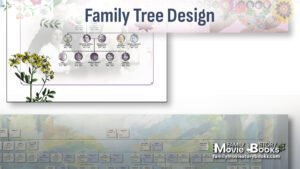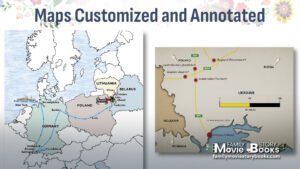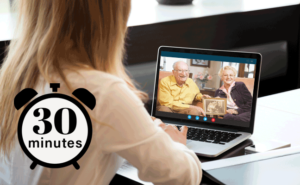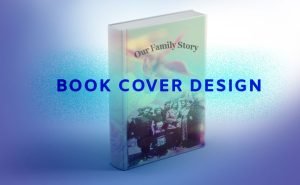
Family History Interview Preparation
Family history Interviews are fun and valuable
You’re so wise to be doing some preparation for your family history interview.
Not got a Family Book Done For You Package yet? Go here before scheduling your interviews.
Scheduling Interviews
Interviews are scheduled time slots when your project storyteller(s) meet with our professional interviewer or writer, either via online video or by phone.
Depending on which package you’ve arranged, you’ll have from two hours to six hours of interviewing time to tell stories, describe characters, and introduce imagery. You can divide up the interview time into one hour or two hour sessions, scheduled at your convenience.
Interviews start and end promptly at the scheduled time. If you’re late or need to leave early, that interview slot is still scheduled for you and can’t be made up some other time. Interviews can only be extended at the discretion of the interviewer or write. They likely have other scheduled sessions after yours. You can reschedule your session with a minimum of 24 hours advance notice. Just open up the email confirmation you received and click “Reschedule”.
It’s normal to want to add more story content to your book even though the included package interviews may have been used up. Additional interviews can be purchased.
Package Interview Allotments
Our Family Heritage Book: Four Hours
The Ancestral Epic Book: Six Hours
Purchase Additional Interviews
Arrange additional interviews.
Note that additional interviews don’t include writing, editing, and graphic design. Request a custom quote for a more complete project costing.
Interview Tools
Download, print, complete the Life Story Questionnaire and the Family Tree Chart for the main character. Return them back to us at least three days before your first interview. Smartphone photos of the documents are fine.
Life Story Questionnaire [PDF]
Family Tree Chart
110 Interview Questions (Optional)
Generic Sentence Completions (Optional)

Images & Documents
During your interview, having relevant imagery handy can be useful in jogging the brain, remembering stories and details, and accessing feelings, traditions and values.
For online video interviews your images and documents can either be paper prints or digital photos stored on your phone, tablet, or computer.
The very best scenario is if your images are digital and stored on the same webcam-equipped device that you’ll be using for your interview. A computer is best because of the larger screen area and more capable interface. The interview platform allows for you to easily share your screen so the images can be seen along with you telling stories.
If you’re on a phone interview, you’ll want to give each image a distinct name and tell the interviewer the name of each image you’re referring to so they can later be matched to your stories when you project is being assembled.
You’ll receive an email with a link to an upload folder specifically created for your Family Book Done For You project.
There you’ll be able to upload digital photos and documents that you want included in your family book design.
Acceptable image types are JPG, JPEG, TIFF, PNG, WEBP, and PDF.
Let us know if you need support in having your physical images digitized.

Talking Points
Yes, storytelling is an artform. And yes, with just a little strategy and planning anyone can tell stories.
Focus
The best approach to storytelling is to focus exclusively on particular relatives, events, and locations.
It’s easy to get off topic so make a few notes about the most important things to get across in a story.
Decide on the essential story details. Who, where, when, what, how, and why are the main components. Given that there is always the issue of how detailed to be, the best way to test whether a detail should be included is whether or not the story remains understandable and interesting if the detail is omitted. Presume your audience – like small grand children – doesn’t already know much about the topic.
On the other hand, detail is delicious but it can bloat storytelling and lead to slow-paced aimless boredom. But not enough detail and your audience won’t be hooked into the story and will wonder why any of it matters because their imaginations won’t have been engaged.
Balancing interview time, you can always opt for a more detailed account and later delete unneeded content. However, you might have to sacrifice other stories if you’re too detailed now.

Characters
Another way to sharpen the focus is to pick your initial characters. Most family trees have dozens to hundreds of esteemed ancestors that you might be tempted to try to cover in one storytelling session. Don’t. Instead pick one or two people to start with. Perhaps focus on your mother or your father. Alternatively choose a pair of grandparents. In this way you can narrow down their stories and more easily avoid going off on a tangent about another relative.
Storytelling
The Punchline
Every story has a punchline or a moral or some sort of conclusion.
Think ahead to each character or anecdote. How would you sum it up in a single headline? What’s unusual or funny about the person or situation? You’ll need to state it plainly. Don’t just describe the facts and leave your audience guessing. Getting that aerial view of your story figured out will make delivering the components of the story more obvious.
One way to tell a story is to mentally break up the story into several chunks in your head. The easiest is Beginning, Middle, and End. Deciding what goes in each will make your delivery easier and more pithy.
The last thing about storytelling is that the best or most interesting storytellers will tell their stories multiple times before the interview. That way they can gauge how their audience reacts, what details are confusing, and the best sequence to roll out the story components.

Take Two
Many who later complain about their initial storytelling are usually disappointed with the first telling of the story. The reason is that they were multi-tasking . . . . struggling to remember the details at the same time they were try to tell the story. The second or third or fourth time a story is told is always going to be better received because the storyteller will have sorted out the sequence of the details and timing of the delivery.
If you’re storytelling for a print book, the first telling may be good enough because the resulting text will later be reworked by a writer. If you’re storytelling for a family movie where they will see you and hear you, even after cutting and shifting some of the recorded narrative, the first telling might be somewhat abrupt. Are we saying that rehearsing is essential? No. Are we saying that reviewing in advance what you might talk about is valuable? Yes.
Story Models
What’s going to happen next?
There are several tried and true storytelling methods and you’ve probably already experienced both of them. One is the Hero’s Journey and another is known as the Seinfeld Method.
The Hero’s Journey
With this storytelling method the hero of the story goes on a journey. They find themselves usually seeking something or someone and setting out on some kind of quest which along the way leads them through all sorts of perils and learning moments, triumphs and tribulations.
The hero’s journey can almost be a fill-in-the-blanks kind of approach to telling someone’s story. “The intrepid family historian set out to publish a story book about her grandmother’s life but had to find her story, photos, and a lost family bible. By consulting with others, working through many sleepless nights, she created a captivating book that to this day is still the most popular book at bedtime story time.” This basic description is essentially the hero’s journey.
If you think about your ancestors, especially those who now have descendants in North America or other immigration destination places, many were immigrants who left their homeland and traveled to somewhere else to start a new life. Inherent in those journeys were many perils and moments of celebration.
Even if you don’t know your specific ancestors’ story, odds are they were part of a large migration of people who were also leaving one place and moving to the same new place. Many of those large migrations and societal shifts are well-documented and could shed significant light on the details of your own ancestors’ stories.

The Hero’s Journey: Step By Step
The Departure
The Ordinary World
The Call to Adventure
Refusing the Call to Adventure
Meeting the Mentor
Crossing the Threshold
Initiation
Test, Allies, and Enemies
Approach to the Inmost Cave
The Ordeal
The Reward
Return
The Road Back
Resurrection
Return With the Elixir
more Story Models
The Mole Hill
TV sit-coms often have a different approach to storytelling that can lend itself very well to family history interviewing. Why? Because the lives our family members are not unlike the lives of sit-com characters!
The Seinfeld Method
If you ever watched the TV show Seinfeld and lots of other popular sitcoms you may have noticed that a significant amount of the dialogue revolves around tiny details that have been blown way out of proportion. It’s the make-a-molehill-into-a-mountain strategy.
This can be useful in family storytelling because you may have only inherited a small amount of the detail around a particular relative or branch of your family. So rather than giving up the idea of honoring those ancestors, the Seinfeld method challenges you to go into minute detail about what you do know about those ancestors.
For instance, if the only fact you have about some relatives are that they arrived at a particular port after having left their homeland, part of your story could be about that immigration process, those ports that were receiving boatloads of foreign language speaking immigrants from your ancestor’s country, and arriving in a new country with literally just a suitcase and a small amount of cash.

Those kinds of stories have been well documented and are very likely to be the same story that your ancestors went through depending on who they were. By documenting the story about the journey that your ancestors probably took you’re giving your audience a taste of what it must have been like for your ancestors even though you don’t know your ancestor’s specific story.
This same approach works well for ancestors who were farmers, soldiers, business owners, home makers, and more.
Tips & Tricks
Don’t Talk About What You Don’t Know
A family history interview goes by quick….it’s over before you know it. To maximize useable story content don’t talk about what you don’t know. All of our families have mysteries, lost relatives, documents and images we can’t find, and oodles of names, dates, and places we can’t remember.
Don’t waste a single breath on what you don’t know. Move on to what you do know. Something recorded for posterity is vastly better than a bunch of recorded interview media and transcripts that simply get deleted because it’s full of “I forgot…” or “I can’t remember….”
Things Not To Say
Vague English pronouns like “it, them, they, he, she, there, here, those, thing”… don’t mean anything specific. They are lazy words of convenience. The best storytellers use specific names of people, places, or things…actual nouns. Instead of saying “He went there after”, be specific and say “Uncle Bob went to New York during The Great Depression.”
Avoid specific dates unless they are historically relevant and crucial to the story. Most times trying to remember and correctly speak a day, month, year and a time as part of story will trip up the storyteller, causing mistakes and retakes, and introducing factual errors that will drive people crazy later. Instead, be more vague. Say “Sometime in the 90’s”, or “when she was a young woman”, etc.

Lastly: Be nice. Family books and movies are meant to inspire the next generation and help them understand the amazing family power that runs in their genes.
Don’t waste any time saying negative things about ancestors or family members. Instead, find something positive or admirable about them. It’s even okay to make something up as long as it’s complimentary.
If you feel the next generation really must know about someone’s transgressions or personality flaws only use the story as a way to illustrate a value or a life lesson. Leave out the shaming and blaming part.
Memory Zingers
Old Media Opens Doors
The human brain is an amazing storage device. For most of us we have memories filed away that we can’t remember having! Whether it’s names, places, dates, stories, events, faces, emotions, smells, we likely haven’t really forgotten them but rather we aren’t sure where in our memories those details are kept, making them seem forgotten.
But with simple memory zingers you can open doors to vivid memories of things you haven’t thought about in years. Anything that primes the memory is a zinger or a jogger as others call them.
Some of the best zingers are photographs, film footage, movies, scrapbooks, school annuals, club newsletters, newspaper articles, music, perfume, meals, drinks, and recipes, wine and refreshments, wall paper, décor, and furniture, sayings, and religious or life cycle practices life weddings and funerals.
The best way to use memory zingers is for recovering presumed memories around eras, decades, relationships, jobs, people or events that your logical mind says you probably should remember something about, even though you can’t yet put your finger on it.
Approach it like a tour of a museum or an art exhibit. Start the process without expectation. Just begin to do things that activate your senses (seeing, smelling, taste, hearing) that are related to the era you’re trying to access memories. It doesn’t even need to be your own stuff. You’ll be surprised what comes flooding out!

One common practice for our interviewers is to review newspaper articles for the town or city where you grew up. The headlines from those twenty years in the places you lived are probably connected or associated to happenings in your own life or your parents and family. Another option is to visit the local community archives or museum for the places you lived, either inperson or online.
extras
There’s always more to do on great works of art . . . they’re never really done! To give you added possibilities upgrade your package with these deluxe services.
-
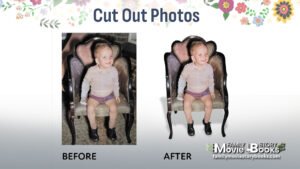 Rated 0 out of 5$30.00 – $150.00Select options This product has multiple variants. The options may be chosen on the product page
Rated 0 out of 5$30.00 – $150.00Select options This product has multiple variants. The options may be chosen on the product page -
 Rated 0 out of 5$30.00 – $90.00Select options This product has multiple variants. The options may be chosen on the product page
Rated 0 out of 5$30.00 – $90.00Select options This product has multiple variants. The options may be chosen on the product page -
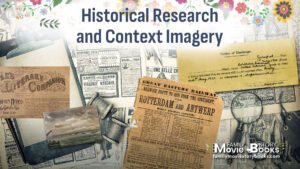 Rated 0 out of 5$100.00 – $330.00Select options This product has multiple variants. The options may be chosen on the product page
Rated 0 out of 5$100.00 – $330.00Select options This product has multiple variants. The options may be chosen on the product page
FAQ's
Yes, we can interview anyone else who can help tell your family stories. It could be your grandparents, aunt, uncle, cousins or others. Additional interview and writing charges would apply. Additional book design charges would also apply to include the new interview text in your book.
Most interviews take at least an hour to obtain useful and interesting story text. Our packages include enough time for one or two people to be interviewed. Some people have good days and bad days so multiple interview dates helps you get the most complete story gathering.
All of our books are designed as 10” x 8” either portrait or landscape. Additional book sizes and orientations are available. We’ve also got several styles of design that you can choose from which will be shared with you once you’ve ordered your package.
Yes upon completion of the design, you’ll own the full rights to the book and its content. If you plan on selling the book please let us know at the beginning of the process so we can help you review copyright issues and release Family Movie Story Books from any liability.
If you’re the person arranging the project for your parents, you may need to remain involved in the project, depending on how techi your parents are. For example, you may need to help with uploading digital images, reviewing text before the book is designed, or reviewing versions of the designed book.
We have several beautiful book design templates that you can choose from. Each one has different colors, typefaces, treatments and styles.


